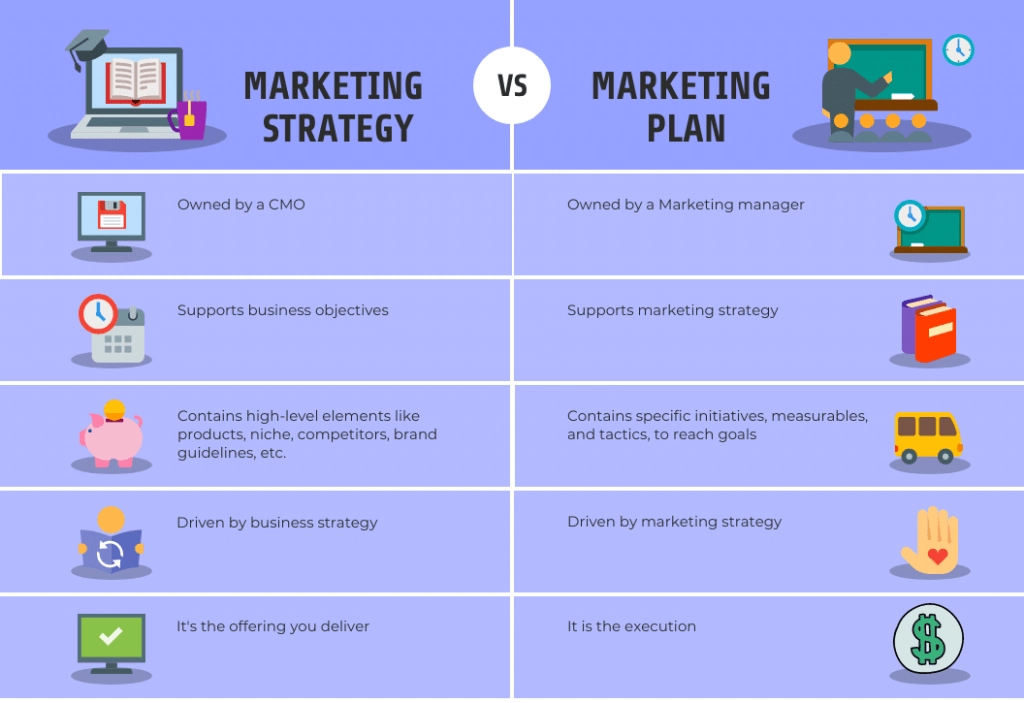Discover the untapped secrets of successful marketing: A step-by-step guide to transformative strategies that will skyrocket your business!

Image courtesy of Christina Morillo via Pexels
Table of Contents
Welcome to our ultimate guide on crafting an exceptional marketing strategy! In today’s fiercely competitive business landscape, a well-executed marketing plan has become the driving force behind sustained growth and success. However, many businesses struggle to navigate the complexities of marketing, often making costly mistakes or missing valuable opportunities.
In this blog post, we will unveil a step-by-step blueprint to help you accelerate your business growth. From understanding your target audience to leveraging innovative tools and nurturing customer relationships, we’ve got you covered with invaluable tips and tricks. Let’s dive in!
Understanding Your Target Audience
Before even thinking about crafting your marketing strategy, it’s crucial to have a deep understanding of your target audience. Conducting comprehensive market research, defining buyer personas, and analyzing customer behavior are essential steps to ensure your message resonates with the right people.
Market research not only sheds light on the needs and pain points of your potential customers but also helps you identify market trends, assess competitors, and uncover untapped opportunities. With this knowledge in hand, you can make informed decisions about your marketing strategies and tactics.
Additionally, creating buyer personas allows you to personify your target customers, making it easier to tailor your messaging and deliver a more personalized experience. Consider demographics, psychographics, and purchasing behaviors to develop accurate profiles that capture the essence of your ideal customers.
Setting Clear and Measurable Goals
Once you have a firm grasp on your target audience, it’s time to set clear and measurable goals. These goals provide direction and benchmarks for your marketing efforts, ensuring you stay on track towards achieving tangible outcomes.
Begin by defining both short-term and long-term marketing objectives. Short-term goals offer quick wins and contribute to the overall success of your strategy, while long-term goals align with your business vision and provide a roadmap for future growth.
In addition to defining goals, it’s crucial to establish key performance indicators (KPIs) that are closely aligned with those goals. KPIs act as quantifiable metrics that allow you to measure progress and determine the effectiveness of your marketing efforts. Examples of common KPIs include website traffic, conversion rates, customer lifetime value, and social media engagement.
To ensure your goals and KPIs are more manageable, break them down into achievable milestones. This will help you stay motivated and allow for a more focused approach to tracking progress and making necessary adjustments along the way.
Identifying the Right Channels
Marketing in today’s digital age offers a multitude of channels to reach your target audience. But not all channels are created equal, and choosing the right ones can significantly impact the success of your marketing strategy.

Image courtesy of www.boastdigital.com.au via Google Images
Evaluate various marketing channels such as social media, email, content marketing, influencer partnerships, and advertising platforms. Consider the preferences and behaviors of your target audience when making your decisions.
Furthermore, taking advantage of customer insights can guide you in selecting the most suitable channels to focus on. Analyze data to understand where your customers are most active and receptive to your messaging. By investing your resources effectively, you can maximize your return on investment (ROI) and achieve optimal results.
Another critical aspect to consider is developing an integrated multichannel approach. Different channels often complement each other, reinforcing your brand message across various touchpoints. For example, social media can be used to create brand awareness, while email marketing can nurture leads and drive conversions.
Allocate your resources strategically across the chosen channels to ensure a cohesive and impactful marketing presence.
Crafting Compelling Content
The cornerstone of any successful marketing strategy lies in creating compelling and valuable content that captivates your target audience. Gone are the days when pushing promotional messages would drive results. Today, consumers demand informative, entertaining, and relatable content from brands.
Understanding different content formats is crucial for crafting a well-rounded strategy. Blogs, videos, infographics, podcasts – each format has its unique strengths and appeals to different segments of your target audience. Diversify your content production to cater to various preferences and increase engagement.
Develop an editorial calendar that outlines when and what type of content will be created. Consistency is key in maintaining your audience’s interest and building a loyal following. Your calendar should include a balance between educational and promotional content, ensuring you provide value while showcasing your expertise.
Additionally, incorporating search engine optimization (SEO) techniques is vital for boosting the reach and visibility of your content. Conduct keyword research to understand the terms and phrases used by your target audience when searching for relevant information. Optimize your content accordingly to improve its ranking on search engine results pages.
Building a Strong Brand Identity
A robust brand identity is essential for differentiating your business from competitors and establishing a connection with your target audience. Building a brand requires careful consideration of core values, mission, personality, and visual elements.

Image courtesy of blog.wishpond.com via Google Images
Define your brand values and determine what your brand stands for. What promises do you make to your customers? What emotions do you want your brand to evoke? These considerations will guide your messaging and overall brand representation.
Create a visually appealing brand identity by designing a memorable logo and selecting a consistent color palette. Visuals play a significant role in brand recognition and recall. Make sure your brand identity is consistently applied across all marketing materials and platforms.
Lastly, craft a cohesive brand message that resonates with your target audience. Connect with them on an emotional level by aligning your values with theirs. Communicate your brand story and consistently reinforce it in all marketing efforts.
Utilizing Innovative Tools and Technology
In today’s fast-paced digital landscape, leveraging advanced tools and technology is essential to gain a competitive advantage and streamline your marketing efforts.
Marketing automation platforms allow you to automate repetitive tasks, such as email campaigns, social media scheduling, and lead nurturing. These tools enhance efficiency and enable you to focus on higher-value tasks, such as strategy and content creation.
Data analytics and metrics tools provide valuable insights into the performance of your marketing efforts. By analyzing data and tracking key metrics, you can refine your strategies and make data-driven decisions. These tools help you understand what is working and what needs improvement.
In recent years, the power of artificial intelligence (AI) and machine learning has revolutionized marketing. These technologies enable automated data analysis, customer targeting, and predictive analytics, leading to more effective campaigns and personalized experiences.
Social media management tools streamline the process of managing multiple social media accounts, scheduling posts, and analyzing engagement metrics. They help you maintain an active and consistent social media presence while saving time and effort.
Nurturing Customer Relationships
Increasing customer acquisition is always a priority, but nurturing your existing customer base is just as crucial. Building strong relationships with your customers encourages loyalty, repeat purchases, and advocacy.

Image courtesy of venngage.com via Google Images
Implementing a customer relationship management (CRM) system is an excellent way to store customer data and track interactions. It allows you to personalize communication, tailor offers, and better understand individual customer needs.
Personalization plays a significant role in nurturing relationships. Engage with your customers on a more personal level by segmenting your audience and delivering tailored content and offers. Personalization makes customers feel valued and understood, strengthening their loyalty.
Building loyalty programs, offering exclusive perks, and providing exceptional customer service are all initiatives that cultivate a strong bond between your brand and your customers. Encourage customers to leave positive reviews, provide testimonials, and refer your business to others, amplifying the impact of word-of-mouth marketing.
Tracking and Adjusting Strategies
Lastly, a successful marketing strategy is not set in stone. It requires constant monitoring, analyzing, and adjusting to ensure its effectiveness.
Regularly track and measure your marketing performance against your predefined goals and KPIs. Analyze data to identify areas for improvement and uncover new opportunities. By staying proactive, you can identify trends and adapt your strategy accordingly.
Experimentation is crucial in marketing. Test new strategies, tactics, and messaging to continuously refine your approach. A/B testing can provide valuable insights into what resonates with your audience and what drives results.
Finally, stay informed about industry trends and changes in consumer behavior. Adapt your strategy to align with new developments and address evolving customer needs. Don’t be afraid to pivot if necessary – flexibility can be a powerful asset in an ever-changing market.
Conclusion
Crafting an exceptional marketing strategy is complex, but with the right tips and tricks, you can achieve remarkable growth for your business.
Remember to thoroughly understand your target audience, set clear and measurable goals, choose the right channels, create compelling content, build a strong brand identity, utilize innovative tools and technology, nurture customer relationships, and continuously track and adjust your strategies.
By following this step-by-step guide, you’ll be well on your way to creating an exceptional marketing strategy that drives success and fuels the growth of your business.
Now, it’s your turn! Have you implemented any of these tips and tricks in your marketing strategy? What were the results? Share your experiences and insights in the comments below!